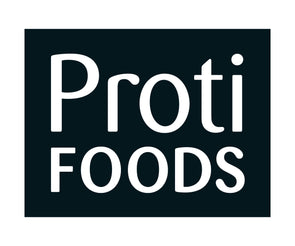
How to Get Enough Fat Intake on a Keto Diet: Tips and Tricks
Following a keto diet means embracing fats as your primary fuel source, but figuring out how to get enough fat on a keto diet can be tricky. While cutting your carb intake may seem straightforward, eating enough fat while balancing other nutrients like protein takes some planning.
In this guide, we'll break down the best high-fat foods for keto, share meal-planning tips, and help you avoid common pitfalls. Let’s dive in so you can fuel your body the right way and stay in ketosis without feeling overwhelmed.
Understanding the Role of Fats on a Keto Diet
Why Fats Are Essential for Ketosis
The ketogenic diet works by shifting your body's energy source from carbohydrates to fat. When carbs are restricted, your body enters ketosis, where it burns fat for fuel and produces ketones. But to maintain this fat-burning state, about 70-80% of your daily calories should come from fats. Without enough grams of fat, you risk feeling sluggish, experiencing cravings, or even dropping out of ketosis entirely.
Healthy Fats vs. Unhealthy Fats
Not all fats are created equal. While fats are essential on keto, consuming the right kinds of fats is crucial for long-term health. Here's the breakdown:
Healthy Fats for Keto:
- Monounsaturated Fats: Found in avocados, olive oil, and nuts. These fats support heart health.
- Polyunsaturated Fats (Omega-3 Fatty Acids): Found in fatty fish like salmon and seeds such as chia and flax. Great for reducing inflammation.
- Saturated Fats: Grass-fed butter, coconut oil, and ghee provide energy and help with fat-soluble vitamin absorption.

Unhealthy Fats to Avoid:
- Trans Fats: Found in processed foods and margarine, trans fats are linked to heart disease and should be avoided.
- Refined Vegetable Oils: Oils like corn, soybean, and canola are high in omega-6 fatty acids, which can cause inflammation when consumed in excess.
How to Get Enough Fat on a Keto Diet
Reaching your fat goals starts with selecting fat-rich ingredients. Use olive oil or butter for cooking, add avocados to salads, and blend coconut oil or heavy cream into coffee or smoothies. Fatty fish like salmon and mackerel provide essential omega-3s, while fatty cuts of meat like ribeye and pork belly deliver both protein and fat.
Full-fat dairy products such as Greek yogurt, cheese, and cream cheese can be added to meals or used in keto-friendly desserts. Be mindful of protein intake — too much protein can trigger gluconeogenesis, causing your body to produce glucose and potentially disrupt ketosis. Keep carbs low, protein moderate, and fat intake high.
Meal Planning Strategies for a High-Fat Keto Diet
Meal planning simplifies hitting daily fat targets. Build meals around high-fat ingredients like eggs, avocados, salmon, and olive or avocado oil. For breakfast, scramble eggs in butter and top with cheese and avocado. A spinach salad with grilled chicken, olive oil, and a creamy dressing makes a satisfying lunch, while dinner could be pan-seared salmon with sautéed spinach in garlic butter.
Snacks like cheese, nuts, and keto-friendly bars help maintain energy between meals. Meal prep on weekends to ensure ready-to-eat meals during busy weekdays, keeping you on track without last-minute temptations.

Common Mistakes to Avoid
One common mistake is fearing dietary fat due to outdated beliefs linking it to heart disease. Research shows that healthy fats like olive oil, nuts, seeds, and fatty fish improve heart health, reduce inflammation, and support hormone balance. The key is choosing whole-food fat sources while avoiding processed oils and trans fats.
Another pitfall is overeating protein, thinking it’s safer than fat. Consuming too much protein can cause the body to produce glucose, which may disrupt ketosis. Balancing macros — keeping carbohydrate intake low, protein moderate, and fat high — ensures fat remains your primary fuel source.
Stay on Track with Proti Foods' Keto-Friendly Options
Looking for keto-friendly snacks that help you meet your fat and health goals? Check out Proti Foods’ Keto Bars for a quick, delicious way to fuel your keto lifestyle.
Want more tips on staying on track? Read our guide on Choosing the Best Keto Protein Bars to find the perfect protein-packed snack.
